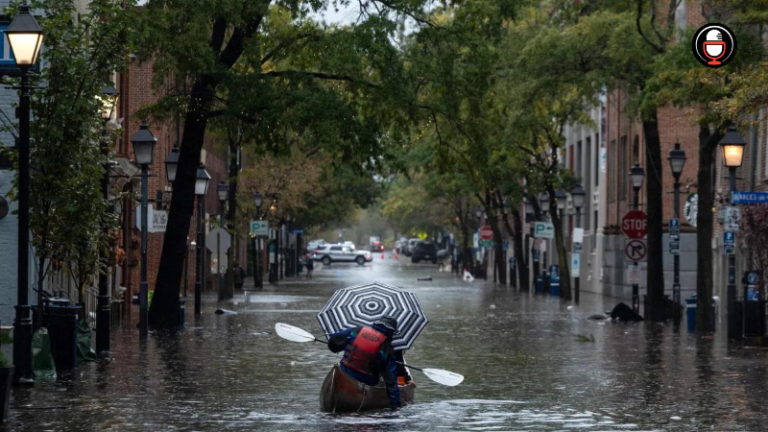Coastal areas are often at risk of flooding, especially during severe weather events. A Coastal Flood Watch is issued to alert residents and visitors about the potential for flooding in coastal regions. Understanding what a Coastal Flood Watch entails and how to prepare for it is essential for ensuring your safety. In this article, we will discuss the significance of a Coastal Flood Watch, its implications, and effective strategies to protect yourself from potential flooding.
Understanding Coastal Flood Watches
What Is a Coastal Flood Watch?
A Coastal Flood Watch is a notification from the National Weather Service (NWS) indicating that conditions are favorable for flooding in coastal areas. This watch is issued when there is a significant threat of rising waters due to heavy rainfall, high tides, or storm surges. While a watch does not guarantee flooding, it serves as a critical warning for residents to stay informed and take precautions.
Differences Between Watches and Warnings
It’s important to distinguish between a Coastal Flood Watch and a Coastal Flood Warning. A watch indicates that flooding is possible, while a warning signifies that flooding is imminent or already occurring. Understanding these terms can help you make informed decisions about your safety and preparedness during severe weather events.
The Impacts of Coastal Flooding
Environmental Effects
Coastal flooding can have devastating effects on the environment, including erosion, habitat destruction, and pollution. Floodwaters can carry debris, chemicals, and other contaminants into the ocean, harming marine life and ecosystems. This environmental degradation can have long-term consequences for biodiversity and coastal health.
Economic Consequences
Flooding can also lead to significant economic impacts. Businesses may experience temporary closures, property damage, and loss of inventory. The cost of recovery can strain local economies and lead to increased insurance premiums for residents. Understanding these potential consequences emphasizes the need for proactive measures when a Coastal Flood Watch is issued.
Preparing for a Coastal Flood Watch
Stay Informed
The first step in preparing for a Coastal Flood Watch is to stay informed. Monitor local news and weather reports for updates on the situation. Utilize apps and websites that provide real-time weather alerts. Being aware of changing conditions can help you make timely decisions about your safety.
Create an Emergency Plan
Having a comprehensive emergency plan is crucial for protecting yourself and your family during a Coastal Flood Watch. Consider the following steps:
- Evacuation Routes: Identify safe evacuation routes and practice them with your family.
- Communication Plan: Establish a communication plan to ensure everyone knows how to reach each other during an emergency.
- Emergency Kit: Assemble an emergency kit with essential supplies, including water, food, medications, flashlights, and batteries.
Elevate Important Documents
In the event of flooding, having access to important documents can be critical. Consider the following:
- Digital Copies: Create digital copies of important documents such as insurance policies, identification, and medical records. Store them securely online.
- Physical Copies: Keep physical copies in a waterproof container or a safe location elevated above potential floodwaters.
Protecting Your Property
Elevate Your Home
If you live in a flood-prone area, consider elevating your home to minimize damage during a Coastal Flood Watch. This can involve raising the structure on piers or a raised foundation. Consult local regulations and professionals to determine the best approach for your property.
Install Flood Barriers
Flood barriers can provide an extra layer of protection against rising waters. These barriers can be temporary or permanent solutions to help keep water out of your home. Evaluate your property for potential entry points for floodwater and consider installing barriers where needed.
Maintain Your Property
Regular maintenance can help reduce the risk of flooding. Ensure that gutters and downspouts are clear of debris, and direct water away from your home’s foundation. Landscaping can also play a role; consider grading your yard to encourage water drainage away from your property.
Responding During a Coastal Flood Watch
Monitor Conditions Closely
During a Coastal Flood Watch, continue to monitor conditions closely. Stay tuned to local authorities for updates and heed any evacuation orders or warnings. Being proactive can help ensure your safety and that of your family.
Prepare to Evacuate
If flooding becomes imminent, be prepared to evacuate. Follow your established evacuation routes and take your emergency kit with you. If you have pets, make arrangements for their safety as well.
Avoid Floodwaters
Avoiding floodwaters is crucial for your safety. Do not attempt to walk, swim, or drive through flooded areas. Even shallow water can be dangerous and may contain hidden hazards. Stay indoors and away from windows until authorities give the all-clear signal.
Read Also: Retro Bowl Unblocked: Relive the Classic Football Experience Anywhere
After a Coastal Flood Watch
Assess Damage Carefully
After a Coastal Flood Watch has passed, it’s important to assess any damage carefully. Avoid entering your property until you are certain it is safe. Wear protective gear, as floodwaters can carry contaminants and debris.
Report Issues
Report any significant issues to local authorities. This can include downed power lines, damaged infrastructure, or other hazards. Keeping your community informed can aid in the recovery process.
Recovery Resources
Take advantage of recovery resources available in your area. Local government agencies, nonprofits, and community organizations may offer assistance for those affected by flooding. Research available programs and seek help as needed.
Conclusion
A Coastal Flood Watch serves as a critical alert for residents in coastal areas, highlighting the potential for flooding. By staying informed, preparing in advance, and knowing how to respond, you can protect yourself and your loved ones during these events. Understanding the implications of coastal flooding—both environmental and economic—underscores the importance of preparedness. Take proactive steps to safeguard your property and ensure your safety, as the impact of flooding can be significant but manageable with the right actions. Stay vigilant, and make sure to take every precaution during a Coastal Flood Watch.

